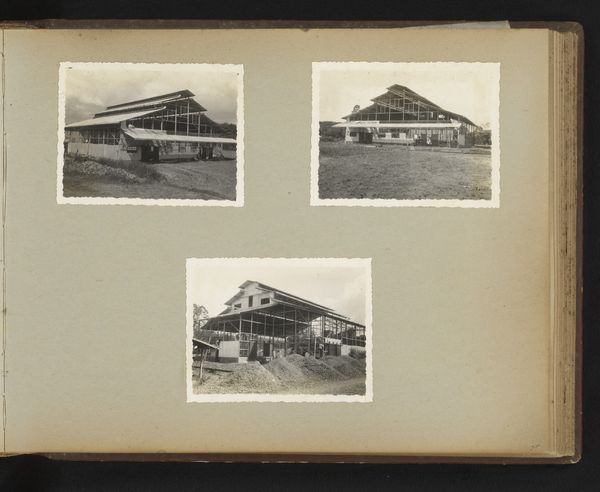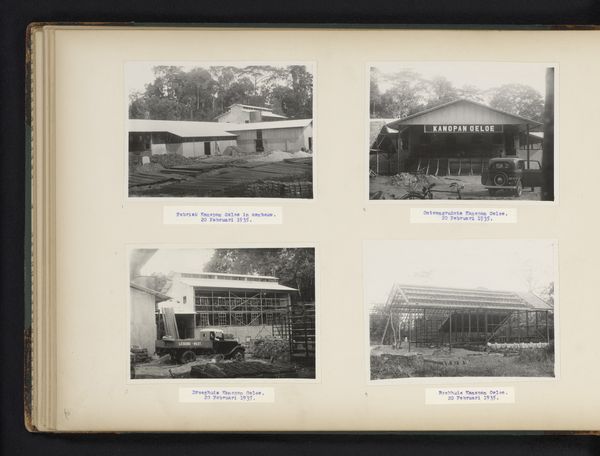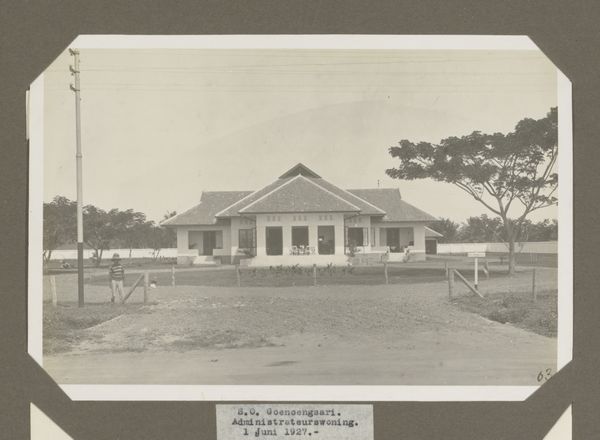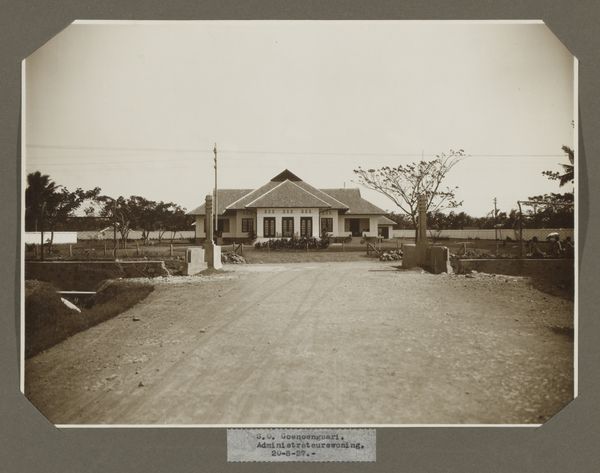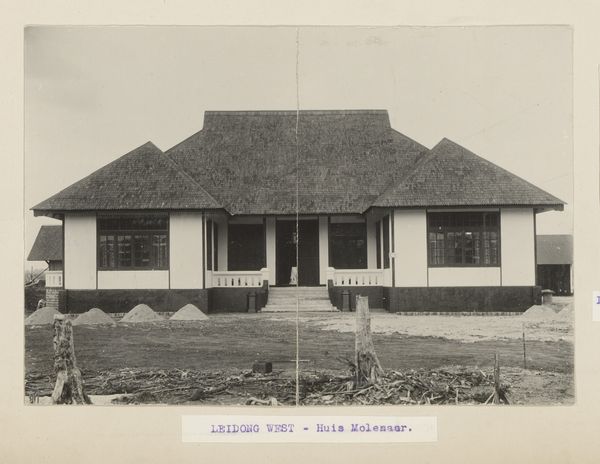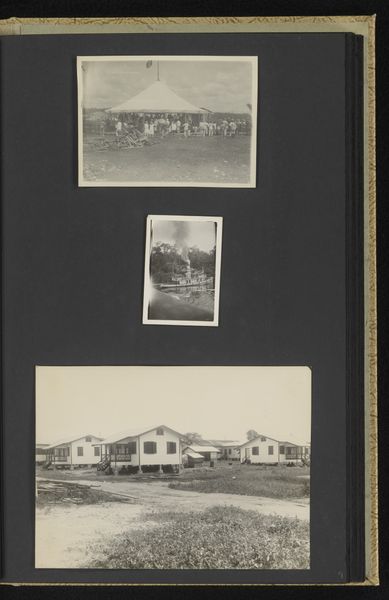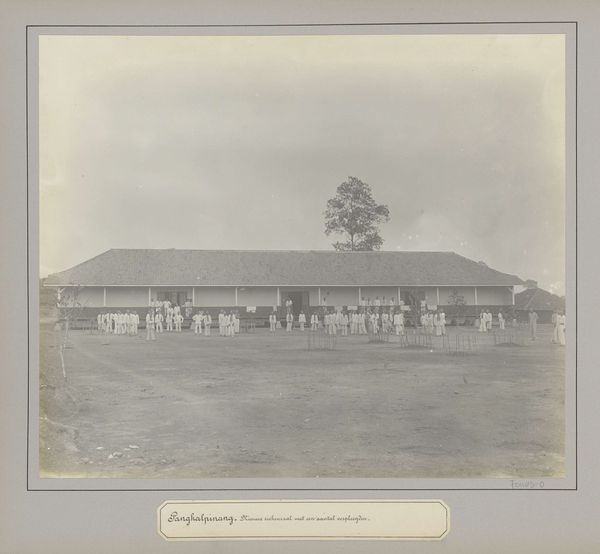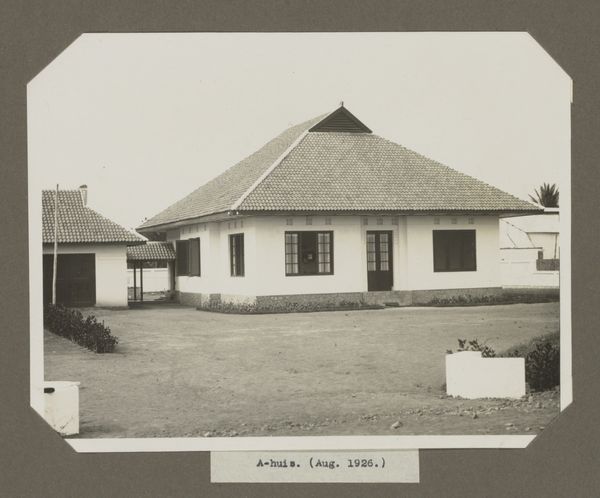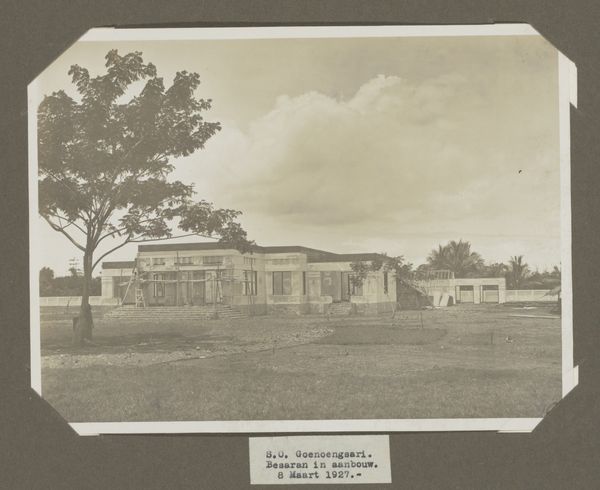
print, photography, photomontage, architecture
# print
#
photography
#
photomontage
#
modernism
#
architecture
Dimensions: height 80 mm, width 112 mm, height 338 mm, width 476 mm
Copyright: Rijks Museum: Open Domain
Curator: This photomontage, titled "Bedrijfsgebouwen" and created between 1927 and 1931, is attributed to an anonymous artist. It combines print and photographic elements, showcasing several modernist architectural structures. What are your initial thoughts? Editor: Stark. And somehow… poignant. The geometric forms against that bleak background speak to a certain industrial-age isolation. Curator: Absolutely. Note the repetition of forms and the seemingly mass-produced nature of these buildings. The use of photomontage allows the artist to juxtapose different architectural designs, possibly reflecting the standardization of construction practices during that era. We see both an embrace and interrogation of modernist principles. Editor: And look closer—those repeating gabled roofs. A clear visual echo, or perhaps a symbol of something deeply ingrained, beyond just architectural style. Given the period, one can't help but think of expanding administrative power and colonial landscapes; the buildings are icons of modernity. Curator: I agree. Let’s not forget that this is a print, and very likely produced in multiples. What would have been the method of fabrication? Who was consuming this work, and where were these 'buildings' likely constructed, reflecting whose labor? Editor: I'm particularly drawn to the flat lighting across the image. It lacks any sense of naturalism, pushing the buildings forward as objects, almost totems in a strange ritual of development. It’s powerful, creating an emotional weight beyond the utilitarian forms themselves. It’s clearly more than just architectural documentation. Curator: Exactly. The artist presents these buildings not merely as structures, but as artifacts imbued with significance. Considering it’s anonymous, it urges us to reconsider established norms about authorship. Editor: Reflecting on this photomontage, I find it reveals how built spaces are never truly neutral. They represent ideologies, both acknowledged and implied. Curator: Yes, seeing through your interpretation of potent visual icons makes me consider more carefully the processes used and conditions surrounding the creation of this piece, urging me to probe more deeply into who crafted this assemblage, under what conditions, and toward what specific end. Thank you.
Comments
No comments
Be the first to comment and join the conversation on the ultimate creative platform.
